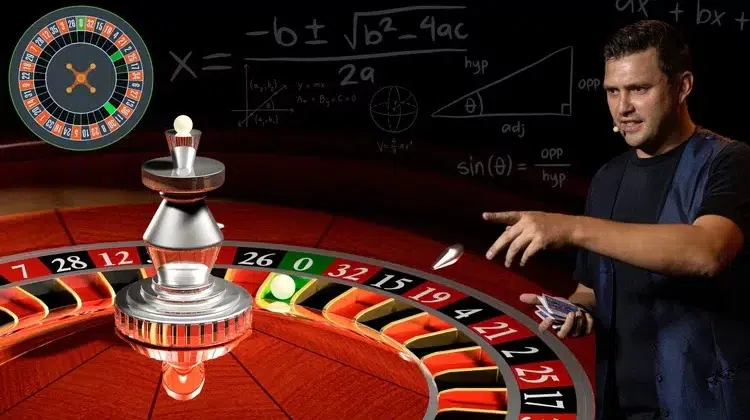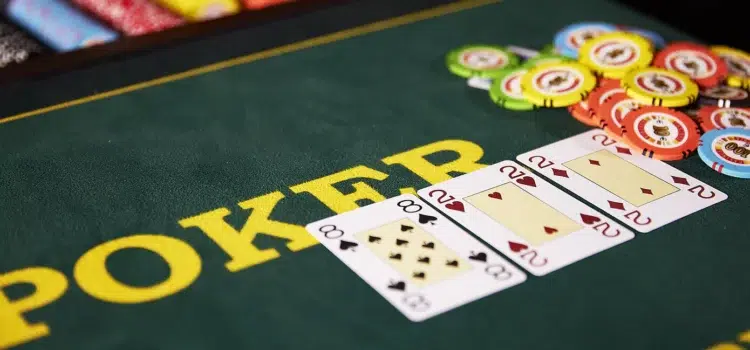
Poker is more than just a game of chance; it’s a game of strategy, psychology, and mathematics. The goal of any skilled poker player is to maximize their profit by making optimal decisions, considering both the odds and the behaviors of their opponents. Poker strategy refers to the decisions players make to achieve this goal, and it is a dynamic and multifaceted approach that evolves throughout a game. To develop a successful strategy, players must be familiar with the underlying principles of the game, including game theory, probability, and psychological manipulation.
Understanding the Basics of Poker Strategy
Poker strategy revolves around making the best decisions based on a variety of factors such as hand strength, position, and the actions of other players. These decisions can range from when to fold, call, or raise to how much to bet, all depending on the situation at hand. Effective strategies are influenced by several critical elements inherent to the game of poker, including imperfect information, the element of chance, and the hidden nature of opponents’ cards. These game-theoretic properties give rise to mixed strategies, deception techniques, and probabilistic thinking.
One of the most complex and fascinating aspects of poker strategy is the multitude of factors that come into play when deciding the best course of action during a hand. These factors include the number of opponents, their tendencies, the stage of the tournament, the size of the pot, and the player’s own stack size, among others. A well-rounded strategy takes all these elements into account and adapts to the changing dynamics of the game.
The Role of Skill in Poker Strategy
While luck plays a role in short-term outcomes, skill is a critical factor in determining long-term success in poker. Players with a deep understanding of the game’s strategic elements are more likely to profit over time, even in the face of bad luck. This distinction between luck and skill is one reason why poker is often seen as a game of skill rather than a pure gamble.
In fact, in 2015, it was announced that heads-up limit Hold’em—a variant of Texas Hold’em—had been essentially solved by computers. This means that a Nash equilibrium, which is the optimal strategy in a two-player game, had been approximated so closely by a computer that it could effectively make decisions that humans could not outplay. The solving of such a game demonstrates how poker strategies can be modeled mathematically, helping players refine their tactics and increase their profitability.
The Fundamental Theorem of Poker
The Fundamental Theorem of Poker, introduced by Doyle Brunson, provides a theoretical foundation for poker strategy. It asserts that each time a player makes a decision, they must consider whether their actions will increase or decrease their expected profit. The theorem holds that the more you act in a way that causes your opponents to make mistakes, the more you will profit. In practice, this means that poker players must always seek to make decisions that maximize their equity in the hand.
While this theorem provides a helpful framework, it also has its limitations. Because poker is a game of incomplete information, players cannot be certain of their opponents’ hands, making it impractical to always make decisions based on the assumption of knowing exactly what cards others hold. Instead, a more realistic approach involves considering a range of hands that an opponent might hold and making decisions that are optimal against this range.
Example: Folding the Second-Best Hand
Suppose you hold a straight flush on a board showing 8♣ 9♠ J♦ 10♠ A♣, and your opponent goes all-in with a bet equal to the pot. If you call, you risk losing to an opponent holding a higher straight flush. According to the Fundamental Theorem of Poker, you should fold because you would be beaten if the opponent holds the higher straight flush. However, folding the second-best hand in this case may not always be the best decision in the long run, since only one specific hand in your opponent’s range beats yours. This highlights how in practice, poker strategy often involves balancing theoretical advice with real-world probabilities.
The Role of Odds in Poker Strategy
The concept of odds is fundamental to evaluating the profitability of decisions in poker. Players must weigh the potential reward of a play against the risk involved in making that play. There are various types of odds to consider in poker, including drawing odds and pot odds.
Drawing Odds
A drawing hand is one that currently has little value but could improve if the right cards come on future streets. The drawing odds are the probability that a drawing hand will complete its draw, expressed as the ratio of favorable outcomes to unfavorable outcomes. For example, if you’re holding a flush draw, and there are nine diamonds left in the deck, your odds of hitting the flush are 9 to 46 (since there are 46 unseen cards). This gives you a drawing odds ratio of approximately 4.11:1.
Pot Odds
Pot odds refer to the ratio between the current size of the pot and the cost of the call. Pot odds help players determine whether it is profitable to call with a drawing hand. For example, if the pot is $30 and your opponent bets $10, the pot odds are 3:1, meaning for every $1 you risk, you stand to win $3 if your hand improves.
By comparing drawing odds to pot odds, you can calculate the expected value (EV) of a call. If the EV is positive, calling is profitable in the long run. For instance, if you hold a flush draw with a 19.6% chance to complete the flush, and your pot odds are 3:1, the call is profitable since your expected value would be positive.
Example: Calling with a Draw
Suppose you hold 9♦ 6♣ and the flop is A♠ 7♠ 8♥, giving you an open-ended straight draw. If your opponent moves all-in with a bet equal to half the pot, your pot odds are 3:1, while your odds of completing your straight are approximately 33%. Since your pot odds are better than your winning odds, the call has a positive expected value, and you should proceed with the call.
The Concept of Balance and Exploitation
One of the most critical concepts in poker strategy is finding a balance between exploiting your opponents and avoiding being exploited yourself. Exploitative strategies involve identifying an opponent’s weaknesses and adjusting your play to take advantage of them. For instance, if an opponent folds too often to bluffs, you can start bluffing more frequently to exploit this tendency.
However, a key risk of exploitative strategies is that your opponent can adapt to your actions. For example, if you start bluffing too much, your opponent might catch on and start calling your bluffs more often. This creates a feedback loop where your strategy can be counter-exploited. The solution is to balance your play, using a mix of bluffs and value bets in such a way that your opponent cannot exploit you easily. Balanced strategies are harder to counter because they mix different types of actions in an unpredictable way.
Game Theory and Balanced Strategies
Game theory is essential in developing balanced strategies. A mixed strategy involves randomizing your decisions, making it difficult for opponents to figure out your pattern of play. For example, if you have a losing hand, you might bluff with a certain frequency (e.g., 75% of the time) to make your play unpredictable.
A balanced strategy, while harder to exploit, does not necessarily maximize profit in every situation. If your opponent is playing poorly, it may be more profitable to adopt an exploitative strategy, taking advantage of their mistakes. On the other hand, against a skilled opponent, a balanced approach is often more effective in the long run.
Applying Mathematics to Poker Decisions
Mathematics plays a crucial role in poker strategy, especially in calculating probabilities and evaluating the expected value of decisions. One of the key mathematical tools used in poker is conditional probability, which helps players estimate the likelihood of certain events based on previous actions. For example, players use conditional probability to evaluate whether an opponent is bluffing, based on their betting patterns.
Example: Estimating the Probability of a Bluff
Suppose you’re facing a river bet and suspect that your opponent is either bluffing or has a winning hand. Based on previous actions, you estimate the probability of your opponent missing a draw at 70% and the probability of them having a hand that beats yours at 30%. If you know that your opponent bluffs 20% of the time when they miss a draw, you can use Bayes’ Theorem to estimate the probability that they are bluffing. This involves factoring in both the likelihood of their draw missing and the frequency with which they bluff.
By applying conditional probability, you can make more informed decisions about whether to call or fold, giving you a strategic edge over your opponents.
Conclusion
Poker is a complex game that combines skill, psychology, and mathematics. Developing an effective strategy requires understanding the nuances of poker theory, recognizing the odds involved in every decision, and knowing when to balance your play to avoid exploitation. By focusing on these key elements and continuously refining your approach, you can increase your chances of success at the poker table. Whether you are a beginner or an experienced player, mastering poker strategy is a continuous journey of learning, adaptation, and improvement.










